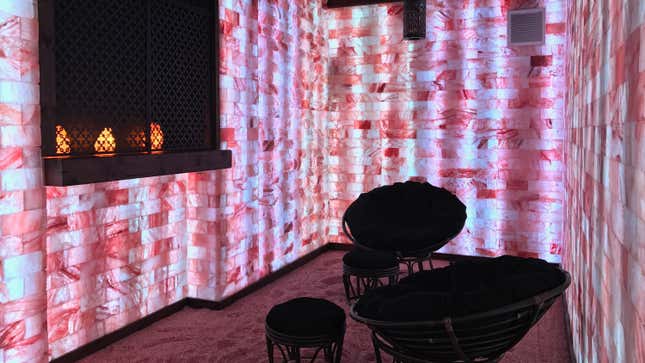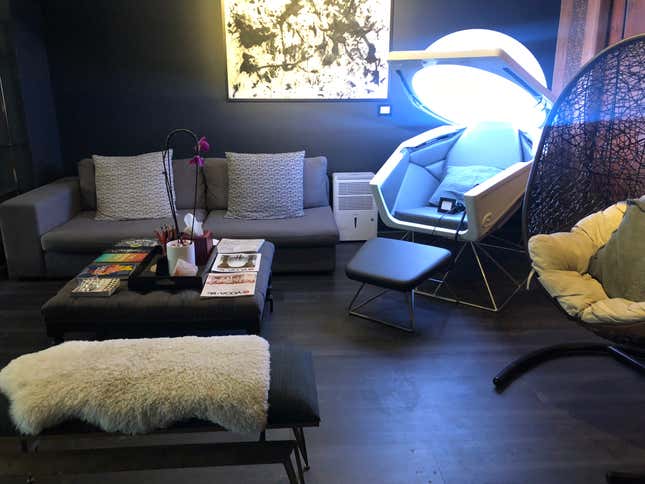Journey to the Pink Heart of a Salt Cave, a Wellness Trend You Can Breathe
Latest

On the ninth floor of an unremarkable building in NoMad near SoulCycle, Sweetgreen, and an aggressively pink cafe named Cha Cha Matcha, is one of the only rooms in Manhattan made entirely of Himalayan salt.
Located in the luxury spa Modrn Sanctuary, it is designed to mimic a salt cave, though it looks more like a millennial pink igloo, with walls of hand-cut bricks and a heated floor covered in coarse, granulated salt. The salinated air comes from crushed, medical-grade salt, according to owner Alexandra Janelli, which blasts from a generator into the room for every 30-minute session. LED lights positioned within are meant to be therapeutic, hypothetically making the salt room a cure for all your basic ailments, whether respiratory problems, a common cold, allergies, sleep problems, eczema, or migraine headaches. More concretely, it’s not a bad way to decompress, even if you’re not suffering from anything in particular.
As a treatment for respiratory or skin problems, halotherapy—the act of breathing in salt air for health benefits—has not been FDA approved in the United States, though the number of salt rooms in the U.S. has ballooned from roughly 10 to more than 300, over a five-year period. Halotherapy, according to its proponents, works by mimicking the dry and salty conditions inside of salt caves; it’s a subset of climatotherapy, which is grounded in the belief that traveling to distinct climates—thermal springs, Icelandic lagoons, the Dead Sea—can relieve symptoms of irritating and difficult-to-manage conditions. Studies have shown climatotherapy at the Dead Sea can be an effective treatment for psoriasis—but for those who can’t travel halfway around the world, climatotherapy is accessible at spas, resorts, and “wellness” centers like Modrn Sanctuary.
Which makes sense: In the last decade, salt has increasingly become a signifier of luxury. Pink Himalayan salt entered the Trader Joe’s aisles in 2009, and has never left; salt scrubs have hit the level of ubiquity that if you search the term on Pinterest, you’d never run out of results to scroll through; and along with light therapy lamps and sunrise alarm clocks, Himalayan salt lamps reached peak trend last year, sold as an aid for sound sleep. (Almost all salt-related wellness trends involve Himalayan salt, which is mined from the mountains in Pakistan, and stem from the idea that because such salt comes from the ground, untouched by civilization, it must be purer than your regular table salt. There’s little evidence to support this.)

Janelli, who now lives in Philadelphia and works remotely, used to do salt therapy every day when she lived in New York. “I used to take business meetings in there,” she told Jezebel. She decided to take over Modrn after visiting the Montauk Salt Cave and noticing that her boyfriend at the time, who suffered from allergies, started to feel better. Janelli is used to skeptics, though. “Acupuncture was poo-poo’d for so long, so was reiki,” she said. “So was hypnosis, and now you’re seeing them become more standard in hospitals.”
“We always say, ‘Come and just try it,’” she added. “Whether it’s the placebo effect or not, it almost doesn’t matter.”
-

-

-

-

-

-

-

-

-

-

-

-

-

-

-

-

-

-

-

-

-

-

-

-

-

-

-

-

-

-

-

-

-

-

-

-

-

-

-

-









































